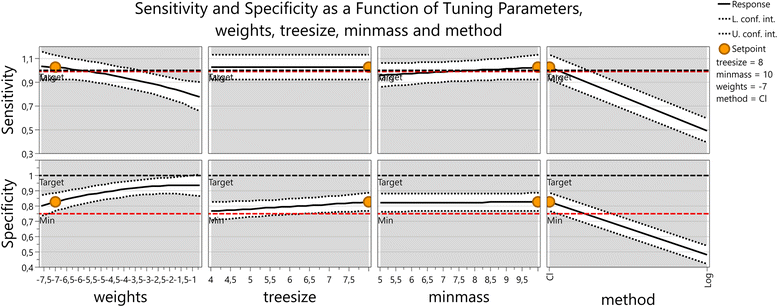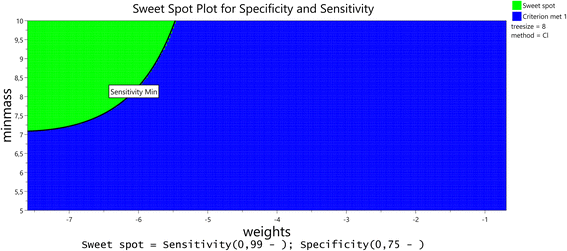Automatic identification of variables in epidemiological datasets using logic regression
- PMID: 28407816
- PMCID: PMC5390441
- DOI: 10.1186/s12911-017-0429-1
Automatic identification of variables in epidemiological datasets using logic regression
Abstract
Background: For an individual participant data (IPD) meta-analysis, multiple datasets must be transformed in a consistent format, e.g. using uniform variable names. When large numbers of datasets have to be processed, this can be a time-consuming and error-prone task. Automated or semi-automated identification of variables can help to reduce the workload and improve the data quality. For semi-automation high sensitivity in the recognition of matching variables is particularly important, because it allows creating software which for a target variable presents a choice of source variables, from which a user can choose the matching one, with only low risk of having missed a correct source variable.
Methods: For each variable in a set of target variables, a number of simple rules were manually created. With logic regression, an optimal Boolean combination of these rules was searched for every target variable, using a random subset of a large database of epidemiological and clinical cohort data (construction subset). In a second subset of this database (validation subset), this optimal combination rules were validated.
Results: In the construction sample, 41 target variables were allocated on average with a positive predictive value (PPV) of 34%, and a negative predictive value (NPV) of 95%. In the validation sample, PPV was 33%, whereas NPV remained at 94%. In the construction sample, PPV was 50% or less in 63% of all variables, in the validation sample in 71% of all variables.
Conclusions: We demonstrated that the application of logic regression in a complex data management task in large epidemiological IPD meta-analyses is feasible. However, the performance of the algorithm is poor, which may require backup strategies.
Keywords: Data management; Epidemiology; Logic regression; Meta-analysis.
Figures



References
-
- Fortier I, Doiron D, Little J, Ferretti V, L’Heureux F, Stolk RP, Knoppers BM, Hudson TJ, Burton PR, International Harmonization Initiative Is rigorous retrospective harmonization possible? Application of the DataSHaPER approach across 53 large studies. Int J Epidemiol. 2011;40:1314–28. doi: 10.1093/ije/dyr106. - DOI - PMC - PubMed
-
- Doiron D, Burton P, Marcon Y, Gaye A, Wolffenbuttel BH, Perola M, Stolk RP, Foco L, Minelli C, Waldenberger M, Holle R, Kvaløy K, Hillege HL, Tassé AM, Ferretti V, Fortier I. Data harmonization and federated analysis of population-based studies: the BioSHaRE project. Emerg Themes Epidemiol. 2013;10:12. doi: 10.1186/1742-7622-10-12. - DOI - PMC - PubMed
-
- Lorenz MW, Bickel H, Bots ML, Breteler MMB, Catapano AL, Desvarieux M, Hedblad B, Iglseder B, Johnsen SH, Juraska M, Kiechl S, Mathiesen EB, Norata GD, Grigore L, Polak J, Poppert H, Rosvall M, Rundek T, Sacco RL, Sander D, Sitzer M, Steinmetz H, Stensland E, Willeit J, Witteman J, Yanez D, Thompson SG, The PROG-IMT Study Group Individual progression of carotid intima media thickness as a surrogate for vascular risk (PROG-IMT) – rationale and design of a meta-analysis project. Am Heart J. 2010;159:730–736. doi: 10.1016/j.ahj.2010.02.008. - DOI - PMC - PubMed
MeSH terms
Grants and funding
LinkOut - more resources
Full Text Sources
Other Literature Sources
Medical

